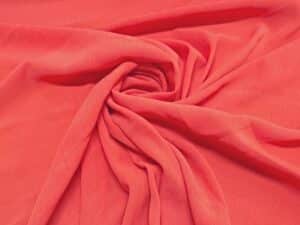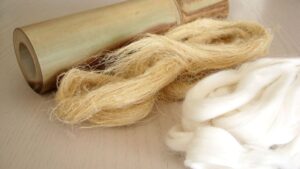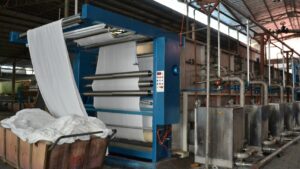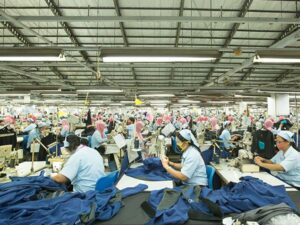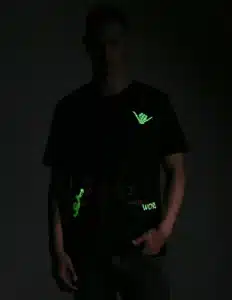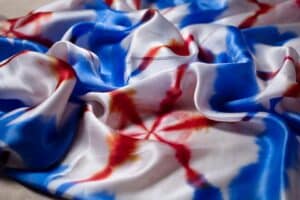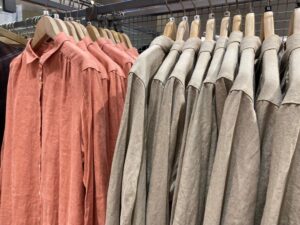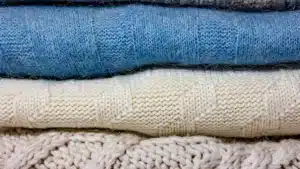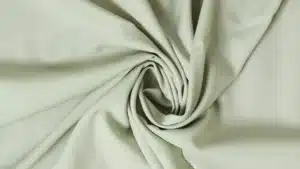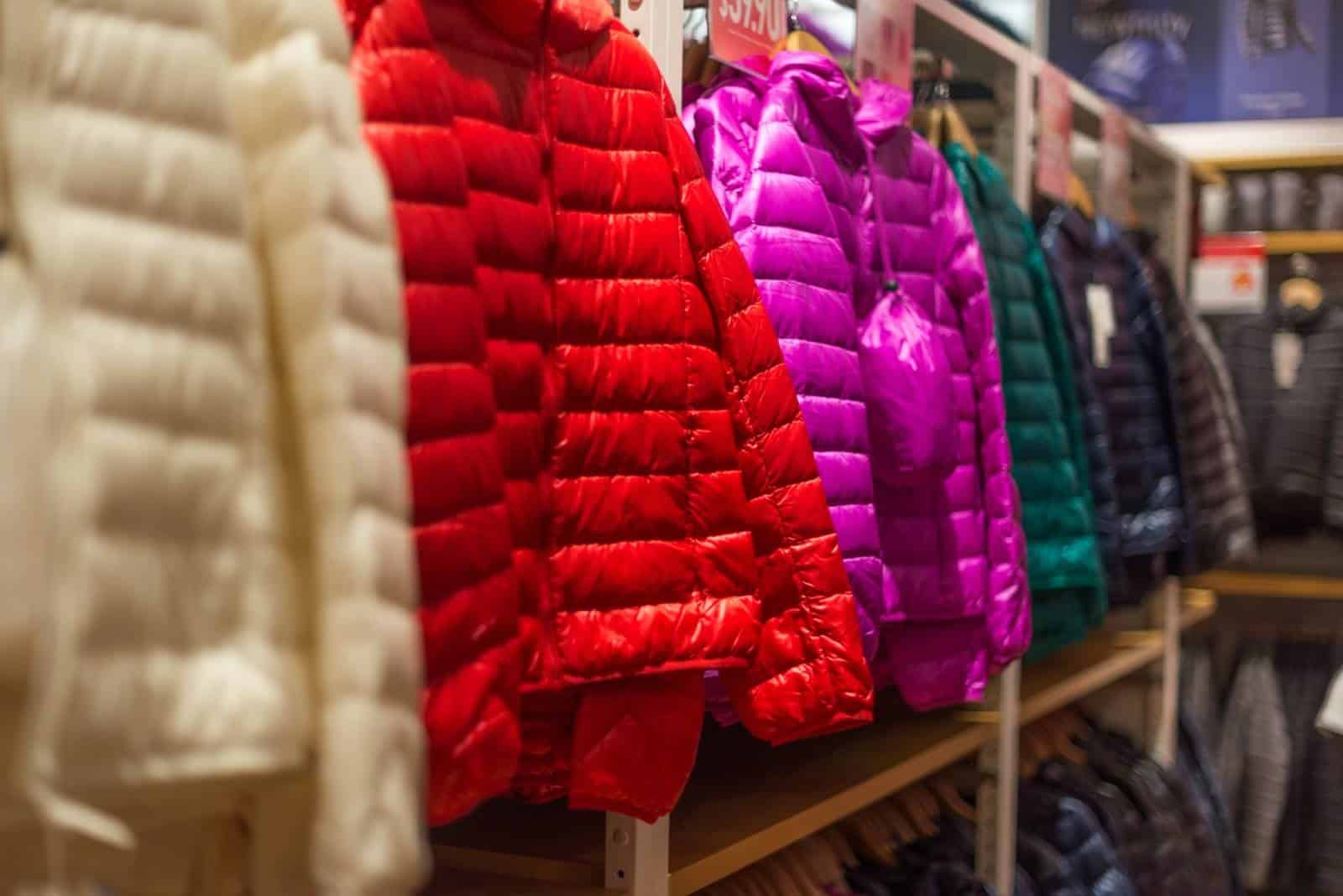
Comparing Natural Down and Polyester Insulation
Explore key differences between natural down and polyester insulation.
Features | natural down | polyester insulation |
|---|---|---|
Warmth Retention | Excellent warmth retention in cold weather. | Good warmth even when wet. |
Weight | Lightweight and easy to carry. | Heavier and bulkier than down. |
Cost | Higher upfront cost for quality. | More budget-friendly option. |
Durability | Long-lasting with proper care. | Wears out faster over time. |
Moisture Performance | Loses warmth when wet. | Stays warm even when damp. |
Packability | Compresses easily for travel. | Less compressible, takes more space. |
Care Requirements | Requires careful cleaning and drying. | Easy to wash and maintain. |
Environmental Impact | Renewable but sourcing matters. | Made from plastic, less eco-friendly. |
When picking between natural down and polyester insulation, think about warmth, cost, and how long it lasts. Each type has good and bad points. Choose the one that fits your needs and where you’ll use it.
Key Takeaways
Natural down is light and very warm, great for cold, dry weather.
Polyester is cheaper and works well in wet weather, staying warm even when wet.
Check care needs: down needs special cleaning, but polyester can be washed in a machine and is easy to clean.
Think about your plans: use down for cold outdoor trips and polyester for daily wear or humid places.
Pick responsibly sourced down or recycled polyester to support ethical and eco-friendly choices.
Understanding Natural Down Insulation
Characteristics of Natural Down

Composition and Structure
Natural down comes from the soft feathers under geese or ducks. These feathers, called down clusters, trap warm air in tiny pockets. This makes down great for keeping heat in. It is also very light compared to synthetic materials. Down is a natural way to stay warm without feeling heavy.
Warmth Retention and Breathability
Down keeps heat well because of its high fill power. Fill power shows how much heat it holds for its weight. Higher numbers mean better warmth and efficiency. Down also lets air flow, keeping you comfy in different temperatures. This mix of warmth and airflow makes down good for cold weather and daily use.
Benefits of Natural Down
Lightweight and High Warmth-to-Weight Ratio
Down is warm without being heavy. It gives better insulation than synthetic options. Jackets with down are lighter and warmer than synthetic ones.
Insulation Type | Packability | |
|---|---|---|
Natural Down | Higher | More compact |
Synthetic | Lower | Less compact |
Compressibility for Travel and Storage
Down can be squished into small spaces, making it great for travel. Jackets and sleeping bags with down fit easily into tight spots. This is helpful for outdoor trips where space matters.
Long-Lasting with Proper Care
Down lasts a long time if cared for correctly. It’s a smart buy for people who want durable insulation. Cleaning it and storing it dry keeps it working well for years.
Drawbacks of Natural Down
Poor Performance in Wet Conditions
Down doesn’t work well when wet. Moisture makes it clump and lose its warmth. This makes it less useful in rainy or humid places. Drying wet down takes a long time, often more than a day.
Higher Cost Compared to Synthetic Options
Down costs more than synthetic insulation. Its price reflects its warmth, lightness, and durability.
Insulation Type | Cost Comparison | Properties |
|---|---|---|
Down | More expensive upfront | Superior insulating properties and longevity |
Synthetic | Generally more affordable | Easier to care for, less warm, heavier, less compressible |
Ethical Concerns and Sourcing Issues
Some people worry about how down is collected. Many brands now use responsibly sourced down to ensure humane practices. Look for labels like Responsible Down Standard (RDS) to choose wisely.
Understanding Polyester Insulation
Characteristics of Polyester Insulation

Made From Synthetic Fibers
Polyester insulation is made from man-made fibers. These fibers copy the features of natural down but have their own benefits. Thin fibers trap air to keep you warm. Thick fibers stay strong and bounce back after being squished.
Feature | Description |
|---|---|
Thin Fibers | Trap air to hold heat and insulate well. |
Thick Fibers | Resist flattening and regain shape after compression. |
Polyester is a type of plastic used in many textiles worldwide. It can be recycled, but only a small amount is reused today. This shows it could be made more eco-friendly in the future.
Works Well in Wet Weather
Synthetic insulation stays warm even when wet. Natural down loses heat when soaked, but polyester does not. Some polyester fibers have coatings that help keep heat steady. Tests show polyester insulation holds heat as well as other materials like foam. This makes it a good choice for wet or cold places.
Benefits of Polyester Insulation
Stays Warm When Wet
Synthetic insulation keeps you warm even in wet weather. It dries fast, so it’s great for rainy or humid areas. You won’t feel cold even if your jacket gets soaked.
Cheaper and Budget-Friendly
Polyester insulation costs less than natural down. It can be made from recycled materials, which lowers its price. This makes it a good option for jackets and sleeping bags without spending too much.
Synthetic insulation is cheaper than natural down.
Recycled fibers help keep costs low.
Easy to Wash and Care For
Polyester insulation is simple to clean. You can often wash it in a machine without ruining its warmth or fluffiness. This makes it easy to use every day without extra care.
Drawbacks of Polyester Insulation
Heavier and Harder to Pack
Synthetic insulation is heavier than natural down. It doesn’t squish down as much, so it takes up more space. This makes it less useful for hiking or camping trips where weight matters.
Wears Out Faster
Synthetic insulation doesn’t last as long as natural down. Over time, it may lose its fluffiness and ability to keep you warm. You might need to replace it sooner than other types of insulation.
Not Great for the Environment
Polyester insulation is made from plastic, which isn’t eco-friendly. While it can be recycled, most of it isn’t reused. Making polyester uses resources that can’t be replaced, which harms the planet. Sustainable production methods are needed to fix this problem.
Natural Down vs Polyester Insulation: Key Comparisons
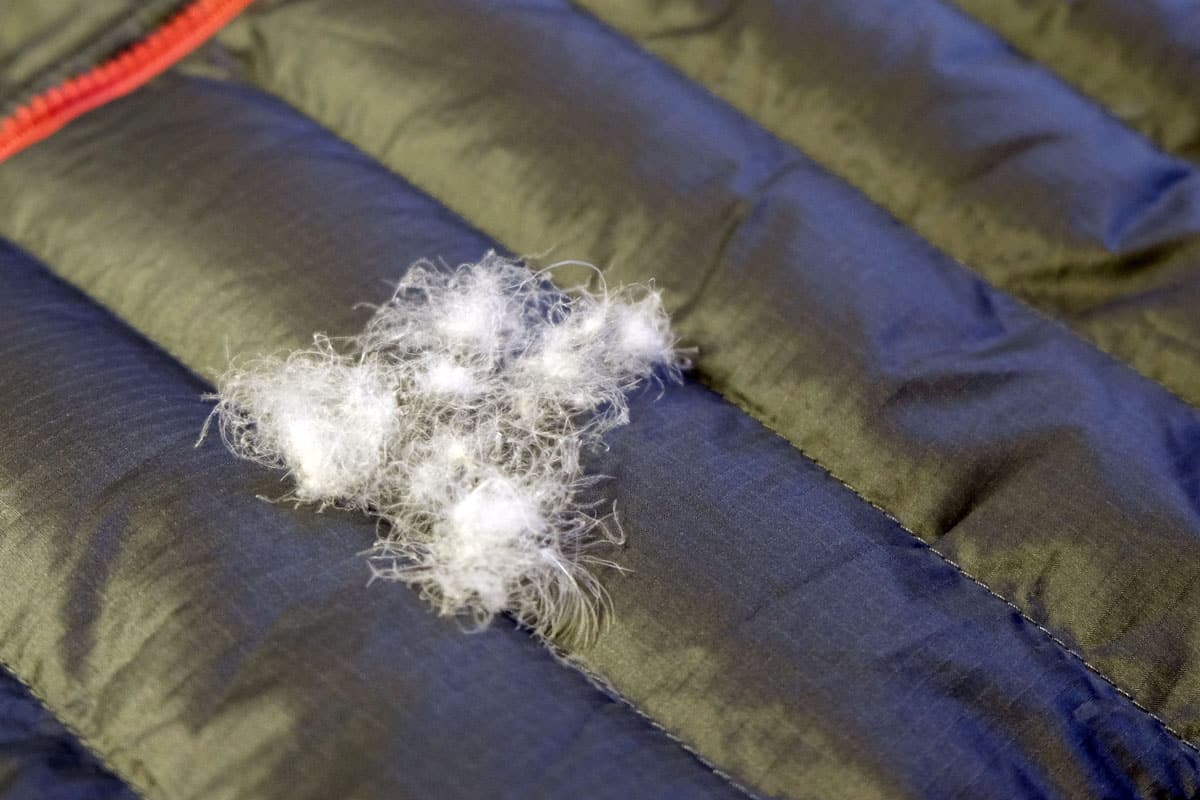
Warmth and Weight
Warmth-to-Weight Ratio Comparison
Natural down is very warm for its light weight. It’s great for hiking or backpacking where weight matters. Synthetic insulation works well but is heavier. It doesn’t keep you as warm for the same weight.
Insulation Type | Warmth-to-Weight Ratio | Best Use |
|---|---|---|
Natural Down | Higher | Lightweight outdoor activities |
Synthetic | Lower | Everyday use or wet conditions |
Performance in Extreme Cold
Down works best in very cold weather. Its high fill power traps more heat, making it great for winter trips. Synthetic insulation is okay but needs thicker layers to match down’s warmth.
Packability
Down can be packed into small spaces without losing warmth. This makes it perfect for travel or outdoor trips. Synthetic insulation is bulkier and harder to pack, so it takes up more room.
Durability and Maintenance
Lifespan of Natural Down vs Polyester
Down lasts longer if you take care of it. Some down items can last for decades. Synthetic insulation wears out faster. It loses its fluff and warmth over time, especially with heavy use.
Down lasts longer with good care.
Synthetic breaks down faster with frequent use.
Care and Cleaning Requirements
Down needs careful cleaning. Washing it wrong can ruin its warmth. It also needs to stay dry to avoid clumping. Synthetic insulation is easier to clean. You can often wash it in a machine without special care.
Performance in Wet Conditions
Moisture Resistance and Drying Time
Synthetic insulation stays warm even when wet. It’s a good choice for rainy or humid places. Down loses its warmth when wet and takes a long time to dry.
Insulation Effectiveness When Wet
Synthetic insulation keeps trapping heat even when damp. This makes it better for bad weather. Down doesn’t work well when soaked, as it loses most of its warmth.

Cost and Value
Upfront Price Differences
Natural down costs more because it’s high-quality and durable. Its price reflects its warmth, light weight, and long-lasting nature. Synthetic insulation is cheaper and easier to make. It’s a good choice if you want something affordable for jackets or bedding.
Insulation Type | Upfront Price | Main Features |
|---|---|---|
Natural Down | Higher | Warm, lightweight, long-lasting |
Synthetic | Lower | Budget-friendly, easy to make |
Long-Term Worth
Natural down costs more at first but lasts longer. With care, it can stay useful for many years. Synthetic insulation wears out faster and may need replacing sooner. Over time, this could cost more. If you want something that lasts, choose natural down. For short-term use, synthetic might work better.
Environmental and Ethical Factors
Sustainability of Natural Down
Natural down is renewable but depends on how it’s sourced. Many brands now follow rules like the Responsible Down Standard (RDS). This ensures animals are treated well and the process is eco-friendly. Always check for labels to confirm ethical practices.
Polyester’s Environmental Effects
Synthetic insulation is made from plastic, which harms the planet. Its production uses resources that can’t be replaced and creates waste. Some types use recycled materials, but most aren’t biodegradable. To help the environment, pick recycled polyester or other green options.
Tip: Care about the planet? Choose responsibly sourced down or recycled synthetic insulation for a better choice.
Choosing the Right Insulation for Your Needs
Matching Insulation to Activities
Outdoor Adventures Like Hiking and Camping
For cold-weather trips, insulation choice is very important. Natural down is warm and light, great for dry, cold hikes. It also breathes well, keeping you comfy during activity. But in wet weather, synthetic insulation works better. It stays warm when wet and dries fast, keeping you safe in rain.
Wear a breathable base layer, an insulated jacket, and a waterproof shell. For freezing temperatures, down jackets give great warmth. Synthetic jackets are better for wet or humid places.
Everyday Use in Down Jackets or Bedding
For daily wear, down jackets are warm and lightweight. They’re great for commuting or casual outings in winter. Synthetic jackets cost less and are easier to clean. They’re good for everyday use, especially in changing weather.
Budget Considerations
When to Invest in Natural Down
Natural down costs more but lasts longer. If you need a warm jacket for regular use or very cold weather, it’s worth the price. With care, down jackets stay useful for years, making them a smart buy.
When Polyester Is the Better Choice
If you’re saving money or need a jacket for rare use, pick synthetic. It’s cheaper and great for kids’ clothes or items needing frequent washing. Synthetic jackets are warm and budget-friendly.
Climate and Weather Factors
Cold and Dry Climates
Natural down works best in cold, dry places. It’s warm, light, and breathable, perfect for winter trips. A down jacket keeps you cozy without feeling heavy.
Wet or Humid Environments
Synthetic insulation is better for wet or humid weather. It stays warm even when wet and dries quickly. This makes it ideal for rainy or damp conditions.
Ethical and Environmental Preferences
Responsibly Sourced Down Options
Choosing natural down? Think about how it’s sourced. Many brands now use down certified by the Responsible Down Standard (RDS). This ensures animals are treated kindly. It also means no live-plucking or force-feeding happens. Picking RDS-certified products lets you stay warm without worrying about animal cruelty.
Natural down is also better for the planet than synthetic materials. A report from the International Down and Feather Bureau (IDFB) shows it has 85% to 97% less environmental impact than polyester. This includes using less water, energy, and creating fewer greenhouse gases. If you care about the environment, responsibly sourced down is a greener option.
Tip: Look for labels like RDS or Global Traceable Down Standard (TDS). These ensure ethical and eco-friendly practices.
Eco-Friendly Polyester Alternatives
Polyester insulation is man-made, but eco-friendly options are improving. Some brands now use recycled polyester fibers. These fibers come from things like old plastic bottles. This reduces waste and encourages recycling. Choosing recycled polyester lowers the environmental impact of synthetic insulation.
Still, polyester has problems. Most of it doesn’t break down, adding to long-term waste. Some companies are working on biodegradable polyester. This could make synthetic insulation durable but less harmful to the planet.
Note: Check for polyester products made with recycled materials. This small choice helps reduce plastic waste.
By thinking about ethics and the environment, you can match your insulation to your values. Whether you care about animals or cutting plastic waste, there are options for you.
Deciding on natural down or polyester insulation depends on your needs. Natural down is very warm, light, and lasts a long time. Polyester insulation is better for wet weather, costs less, and is easy to clean.
FAQ
What’s the key difference between down and polyester insulation?
Down comes from goose or duck feathers and is very warm and light. Polyester is man-made, works well when wet, and costs less. Down is easy to pack, while polyester is simple to care for.
Which insulation works best in wet weather?
Polyester is better for wet weather. It stays warm even when damp and dries fast. Down loses warmth when wet and takes longer to dry, so it’s not ideal for rainy places.
How should I clean down and polyester insulation?
Down needs careful cleaning, often by professionals or with special soap. Polyester is easier to clean and can usually go in the washing machine. Always read the care label for instructions.
Is down better for the environment than polyester?
Yes, responsibly sourced down is greener. It’s renewable and breaks down naturally. Polyester, made from plastic, creates waste, but recycled polyester is improving its eco-friendliness.
Which insulation lasts longer?
Down lasts longer if cared for properly. It stays warm and fluffy for years. Polyester wears out faster and loses its warmth with heavy use. For long-term use, down is the better pick.


